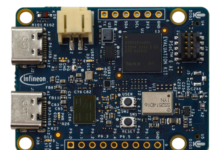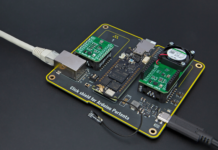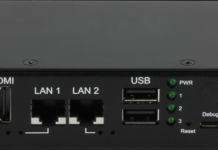
Telco cloud is gaining traction, as telcos invest in cloud-native networks in order to bring down the cost of running networks and services and avoid vendor lock-in. To gain consistency between their data centers and the edge in their private clouds, network providers are evolving from virtual network functions (VNFs) on virtual machines (VMs) to Containerized Network Functions (CNFs). Cloud-native networks offer greater agility, faster release time, shorter time-to-market and lower costs. However, this transformation highlights unknown challenges; such as moving network operators’ infrastructure towards multi-site cloud-based data centers, future-proofed to handle microservices architectures, cloud-native applications – all on top of commodity hardware.
Building Telco Clouds
The Industry Specification Group (ISG) within ETSI organization has defined architecture for developing virtualized network infrastructure and adapting network functions to the specific cloud environment. This will help traditional network operators move from monolithic hardware appliances towards cloud-based distributed infrastructures, whether it be NFV or 5G rollouts.
To help accelerate this process, there are solutions designed to benchmark and validate performance, allowing service providers to confidently rollout NFV deployments and reap the benefits of service flexibility and agility, without sacrificing performance. All it takes is to validate the system for a few use cases like; evaluate cloud infrastructure performance as per ETSI TST-001 standard using methodologies measuring performance in terms of networking, compute storage and validate MANO-readiness. Customized test scenarios further addresses key cloud performance use cases, such as comparing cloud performance, cloud workload migration, and infrastructure capacity planning.
Accelerating Cloud Migration
NFV is a complex and difficult set of technologies to navigate, with deployment of network functions virtualization infrastructure (NFVi) and the functionality of virtual network functions (VNFs) presenting many challenges.
5G is incorporating virtualization concepts and virtualization deployments are being accelerated by 5G’s outsized market opportunity. While NFV has threatened to break through for years, the emerging 5G network architecture has finally set the stage for broad deployment. Evolving cloud strategies are also driving uptake.
Traditional reactive and predominantly manual service assurance and passive test methods that worked well for static networks may not be practical or cost-effective in a rapidly changing virtualized environment. Especially one, where the focus has shifted from assurance of equipment to assurance of service performance and quality in a distributed network.
The 5G Telco Cloud
The success of 5G’s business case is contingent on the efficiencies enabled by the 5G Telco cloud. Compared to public cloud, the Telco cloud has stringent, carrier-grade requirements like; high availability, scalability and performance:
- Moving radio baseband processing to the cloud presents challenges to time-sensitive networking and availability. Proactive RAN service assurance and continuous test will be critical to meeting network performance expectations.
- Separation of the control and user planes supports virtualization and network slicing, but since each slice will have its own performance requirements, end-to-end testing of slices will require automation.
- Cloud-native virtual network functions comprise reusable microservices that are optimized for a cloud environment. Thorough testing of these new microservices and their bundles will be required.
Cloud complexity has grown by leaps and bounds and the performance requirements have become more stringent. Put simply, traditional passive test and assurance do not offer the response time necessary to ensure the performance needed.
Automation Key to Assure Quality
In this cloud-based, virtualized 5G world of dynamic services, network changes happen faster than humans can process. This means automation will be essential to service orchestration and service assurance. It must be intelligent, actionable, real-time, and driven by analytics and machine learning. Continuous integration, continuous testing, and continuous delivery (CI/CT/CD) methods enable the agility that is a key ingredient for success. Active test and automated service assurance simplify the testing, verification and delivery of 5G, they can power:
- Rapid turn up of new services using automated workflows that seamlessly integrate back office systems and test functions and network elements;
- Proactive monitoring of the health and performance of the network, functions and services and verify SLA compliance;
- Intelligent, end-to-end automation of continuous processes across development and operational domains, such as testing and validation, lab management, and launching and assuring networks and services; and
- Zero-touch, automated troubleshooting and problem resolution.
As operator’s NFVi / 5G Cloud requirements are unique and different, it is important for an operator to validate their NFVi / 5G Cloud for telco grade performance to guarantee multivendor VNF/CNF/NS performance demands which runs on them. There are solutions to validate the NFVi, VIM & cloud native 5G Cloud in an automated framework which needs very less or no user intervention from lab-to-production.
Testing and Assurance
The agile, automated testing and assurance solutions help operators accelerate the design, development, and deployment of cloud and virtualized networks. Automating the testing and on-boarding of new VNFs from lab-to-live production leads to 75% reduction in time-to-deployment and almost 90% reduction in errors. Security infrastructure is hardened as security issues are tracked and remediated proactively, reducing both time-to-fault visibility and time-to-fault remediation. The easy to integrate, automated test coverage enables rapid deployment and configuration, in the dynamic virtualized environment, offering agility, scalability, and reduced TCO. Operators can validate NFV environments including SD-WAN or VNF services to ensure performance and SLAs with proven test methodologies, and deliver applications and services from any Cloud – private, public, or hybrid, with confidence.


















